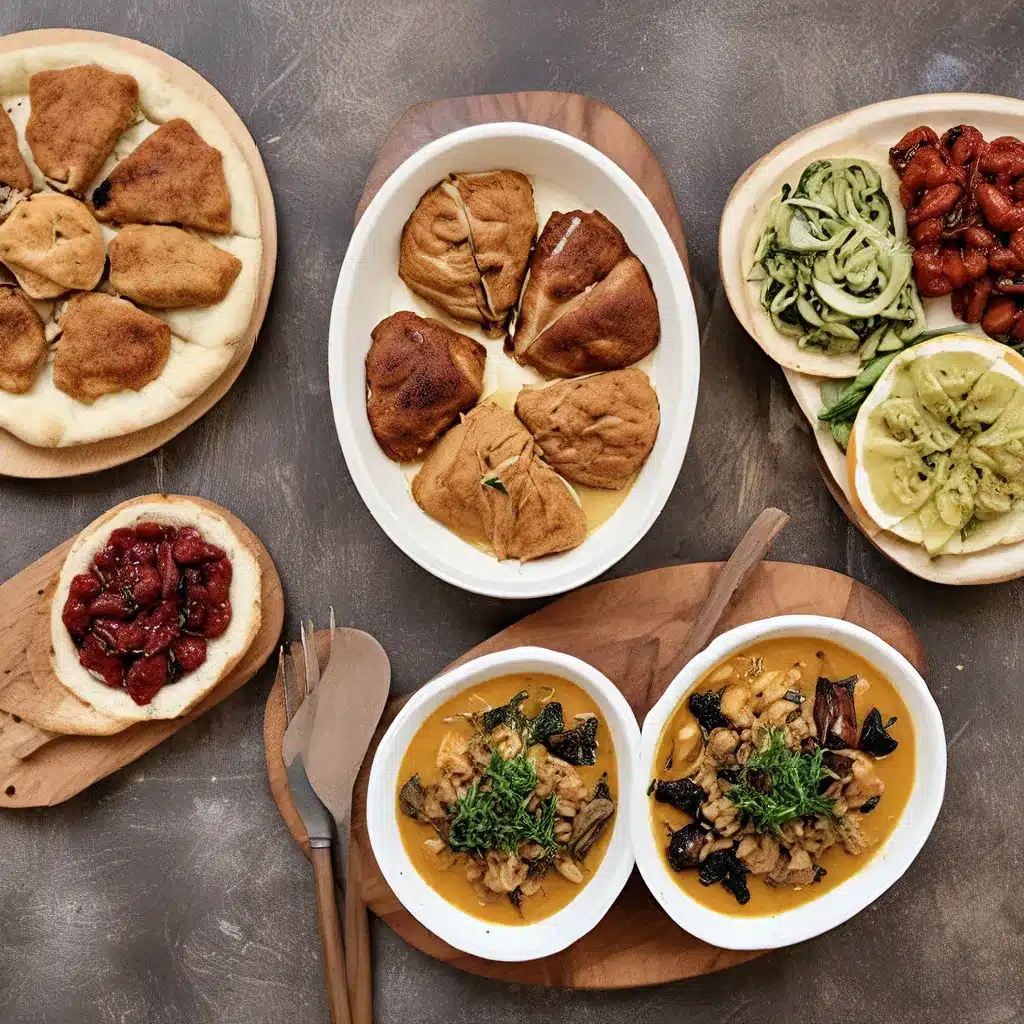
As an avowed globalvore, I’ve always relished the opportunity to explore the diverse flavors of the world. Growing up in a culinary desert, my palate was once quite limited, but my insatiable curiosity for novelty has transformed into a deep appreciation for the global marketplace of tastes. From that fateful first encounter with sushi that opened my eyes to an entirely new realm of culinary delights, I’ve been on a never-ending quest to uncover the hidden gems of the food world.
However, as someone who also identifies as a rōnin scholar – a polymath with eclectic interests – I’ve come to realize that there’s a certain charm and authenticity to embracing local flavors. After all, the essence of a community’s identity is often distilled in the unique dishes and ingredients that have been passed down through generations. It’s a delicate dance, really, balancing the allure of global influences with the deep-rooted traditions that give a place its distinct character.
Uncovering the Glocalvore’s Dilemma
As the age of globalization has transformed our food culture, work, and sense of identity, we’ve found ourselves grappling with a curious conundrum: how do we unite these global flavors with our local roots? It’s a question that has long fascinated me, as I’ve witnessed the subtle interplay between the universal and the particular, the familiar and the foreign.
In my own culinary adventures, I’ve often found myself torn between the desire to explore the exotic and the need to reconnect with the comforting tastes of home. It’s a dichotomy that has led me to appreciate food in a more thoughtful way, delving into the diverse influences that shape our culinary experiences.
The Allure of Local Flavors
There’s something undeniably captivating about the way local flavors can transport us to the heart of a community. These are the tastes that have been meticulously crafted over generations, reflecting the unique terroir, traditions, and cultural heritage of a particular region. It’s a testament to the resilience of local food systems and the enduring power of community-based culinary practices.
Take, for instance, the nek grains found in the rolling hills of the Northeast Kingdom of Vermont. These freshly milled flours and pancake mixes are a testament to the region’s agricultural legacy, offering a taste of the land that is both nourishing and nostalgia-inducing. As the St. Johnsbury Country Store proudly proclaims, embracing these local flavors is a way to “connect with the community and its roots.”
It’s a sentiment that resonates deeply with me, for in these local delicacies, I find a sense of place, a connection to the land and the people who have shaped it. There’s a tactile quality to these ingredients, a tangibility that speaks to the care and attention that have gone into their cultivation and preparation. It’s a reminder that food is not just sustenance, but a tapestry of stories waiting to be unraveled.
Striking a Balance
Of course, the glocalvore’s dilemma is not easily resolved. As we navigate the ever-evolving landscape of culinary influences, it can be tempting to succumb to the allure of the exotic and the novel. After all, the global marketplace has opened up a world of possibilities, allowing us to explore flavors and ingredients that were once beyond our reach.
But therein lies the challenge: how do we strike a balance between embracing these global flavors and honoring the traditions that give our local communities their unique character? It’s a delicate dance, one that requires a deep understanding of the cultural nuances that shape our culinary experiences.
In my own journey, I’ve found that the key lies in mindfulness and respect. When I approach a new dish or ingredient, I make a conscious effort to understand its origins, the stories behind its creation, and the ways in which it connects to the broader cultural fabric. This not only enhances my appreciation for the food itself but also fosters a greater sense of connection to the communities that have nurtured these culinary traditions.
Celebrating the Glocalvore’s Feast
As I’ve navigated this glocalvore’s dilemma, I’ve come to the realization that the true joy lies in the harmonious blending of global and local flavors. It’s about finding the sweet spot where the exotic and the familiar coexist, where the universal and the particular dance in perfect synchronicity.
Take, for example, the Saint Marc USA experience, which seamlessly integrates global influences with locally sourced ingredients. Their menu is a testament to the power of this fusion, offering dishes that pay homage to international culinary traditions while celebrating the unique flavors of the surrounding region.
It’s in moments like these that I find myself truly captivated, where the lines between the global and the local blur, and a new, harmonious tapestry emerges. This is the true essence of the glocalvore’s feast, a celebration of the rich diversity that thrives when we embrace both the universal and the particular.
As I continue on my culinary odyssey, I know that I will always be drawn to the siren call of the exotic and the novel. But I also recognize the profound value in honoring the local flavors that give a community its distinctive character. It’s a delicate balance, to be sure, but one that I’m more than willing to explore, for in doing so, I believe we can unlock a deeper appreciation for the world around us – one bite at a time.

